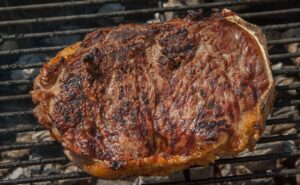If you frequently find yourself needing to keep food warm while entertaining guests or when preparing meals in advance, a warming drawer or hot water pan can be an invaluable addition to your kitchen arsenal.
In this ultimate guide, we will walk you through everything you need to know about using a warming drawer or hot water pan effectively.
How to Use a Warming Drawer
A warming drawer allows you to keep already cooked or baked dishes warm until you’re ready to serve them. Here are the steps to using a warming drawer:
- Preheating the Warming Drawer: Before placing any dishes in the warming drawer, it’s important to preheat it. Follow the manufacturer’s instructions to set the desired temperature.
- Adjusting the Temperature: Once the warming drawer is preheated, you can adjust the temperature to the appropriate level needed to keep your food warm. Most warming drawers have temperature control settings that allow you to choose a specific temperature.
- Choosing the Right Dishes: Not all dishes are suitable for warming drawers. Opt for oven-safe dishes like ceramic or glass that can handle the heat. Avoid using plastic or melamine dishes, as they can melt or warp.
- Placing the Dishes: Arrange the dishes in the warming drawer, ensuring that there is space between each dish for heat circulation. Stack dishes only if the manufacturer’s instructions permit it.
- Cleaning and Maintenance: After each use, clean the warming drawer according to the manufacturer’s instructions. Regularly check for any food spills or debris that may accumulate, and clean the drawer to prevent odors or damage.
How to Use a Hot Water Pan
A hot water pan is commonly used in buffet setups or catering events to keep food warm throughout the meal. Here are the steps to using a hot water pan:
- Filling the Hot Water Pan: Before setting up the hot water pan, fill it with hot water to the desired level. Follow the manufacturer’s instructions for the appropriate water level.
- Adjusting the Temperature: Some hot water pans come with temperature control settings, allowing you to adjust the heat level. If your model has this feature, set the temperature according to your needs.
- Choosing the Right Dishes: Similar to warming drawers, it’s important to use oven-safe dishes when using a hot water pan. Ceramic or stainless steel dishes are recommended.
- Placing the Dishes: Place the dishes with the prepared food into the hot water pan. Make sure that the water level doesn’t reach the top of the dishes, as this can water down the food.
- Cleaning and Maintenance: After the event, drain the water from the hot water pan and clean it thoroughly. Remove any food particles or debris to maintain cleanliness and prevent the growth of bacteria.
FAQ’s
What is the difference between a warming drawer and a hot water pan?
A warming drawer uses heat elements to keep food warm, while a hot water pan uses hot water to maintain the temperature.
Can you use a warming drawer or hot water pan for cooking?
No, they are primarily designed for keeping food warm and not for cooking purposes.
How long can food be left in a warming drawer or hot water pan?
It is recommended to keep food in a warming drawer or hot water pan for no longer than two hours to ensure food safety.
Is it safe to use a warming drawer or hot water pan for keeping food warm for extended periods of time?
It is generally safe to use these appliances for extended periods, but it’s important to monitor the temperature and not exceed the recommended time limit.
How can I avoid drying out food in a warming drawer or hot water pan?
To prevent food from drying out, cover dishes with foil or use a cover that allows steam to escape.
Conclusion
Using a warming drawer or hot water pan can simplify your meal preparation and ensure that food stays warm until it’s time to serve.
By following the steps outlined in this guide, you can make the most of these appliances and enjoy hot and delicious meals without any worries.
Remember to always refer to the manufacturer’s instructions for specific guidance on using your warming drawer or hot water pan. Happy cooking!
